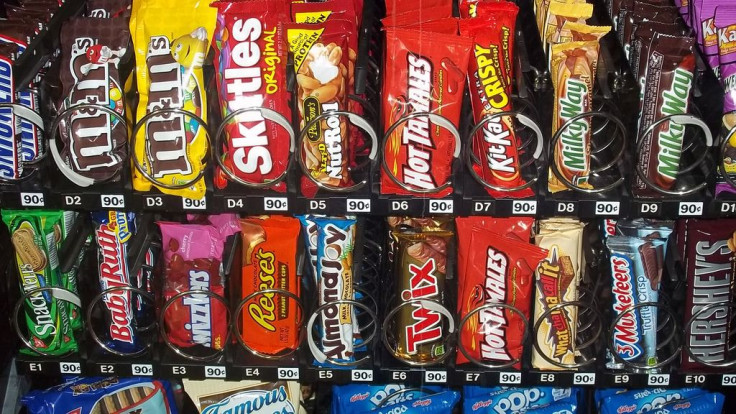Schools Get Double Teamed: Sugary Foods And Drinks 11.2% Less Available When State And District Bans Work Together

Seventeen percent, or 12.5 million, children in the United States are obese, reports the Centers for Disease Control and Prevention. Shockingly, one in seven preschool-aged children are obese. Given these facts, and obesity's ranks among the leading causes of death, lawmakers have considered keeping unhealthy foods and beverages out of school zones.
From 2005 to 2008, 16 percent of children's caloric intake was from excess sugar, with 59 percent of these calories coming from foods and 41 percent from beverages. Such consumption of caliories from excesses in sugar and fat leads to weight gain and obesity. Lawmakers have considered that, if 35 percent of a child's caloric intake comes from school meals, then something must be done to decrease the number of unhealthy and fattening options available in schools.
Competitive foods, or foods outside of a school's meal program, found either in vending machines on school premises or right outside of schools, have been available to students for years. Lawmakers have passed restrictive laws at the federal and district level on these options, separately. A new study, however, shows that these laws are most effective when passed and abided by both the state and individual school district.
Improving food and beverages in the school environment for children is not a new concept; though laws and the level from which they are made is a newer concept.
Much has been done in recent years to improve meal programs in schools. Thanks to public health efforts like Let's Move Salad Bars To Schools, health officials are attempting to improve the quality of food served in our nation's public schools. Salad bars, specifically, not only increase a child's likelihood of consuming healthier foods, but also teach that child about food choices and can shape food-related behavior outside of school.
Related to efforts to get healthier foods into schools are initiatives to get competitive, unhealthy options out of schools.
But who should make these laws? Before the study, the laws were mandated by the state or by the school district. According to study results, foods high in sugar were 11.2 percent less available to children when both the state and district mandated a limit on sugar content around schools. Without any policy in place, candy, salty snacks, and sugar-sweetened beverages are available for sale in 80 percent of public schools. With district-only laws against their sale, they are still available in 20 to 30 percent of schools. Similarly, with state-only laws against their sale in schools, they are still 20 to 40 percent available. However, and most notably, with district and state based laws against their sale, only 10 percent of schools in the study still granted children access to these prohibited and malnutritious foods.
Researchers have thus claimed that the policies at state and district levels work to reinforce each other. The resulting environment in schools, free from excess sugar, can lead to better diet choices in the lives of each of these students and may very well improve levels of childhood obesity.
Source: Chriqui JF, Turner L, Taber DR, Chaloupka FJ. Association between district and state policies and US public elementary school competitive food and beverage environments. JAMA. 2013.



























